Temple of Literature – Vietnam’s first university
Temple of Literature – Quoc Tu Giam is no longer a strange name for Hanoi’s lovers, referring to this place, everyone will immediately think of the talented and virtuous people who are listed on the stone turtles. This is not only a tourist destination, but the Temple of Literature is also a “cradle” showing diligence, hard work, day and night to promote promotion, brocade robes to the village, is the dream of many “talented” people at that time.
The Temple of Literature started construction in 1070 under King Ly Thanh Tong. It is known that the Temple of Literature is the place to worship the saints and masters of Confucianism such as Confucius, Manh Tu, and Chu Van An, in addition, this was also the first royal school at that time. The first student to study here was Crown Prince Ly Can Duc, the son of King Ly Thanh Tong, who was only 5 years old at that time. In 1072, he ascended the throne and took the title Ly Nhan Tong. At first, the school was only to serve only the children of the king, or the nobles in the dynasty. During the reign of King Tran Thai Tong, the Temple of Literature was accepted to take in the children of ordinary people with excellent academic ability.
The Temple of Literature stretches on an area of 54331 m2, including many architectural works, including Literature Lake, Well of Heavenly Clarity, Constellation of Literature pavilion, Stelae of Doctors, Attained Talent gate, Imperial academy, Crystallization of Letters gate, Accomplished Virtue gate and The Great Middle gate.
Sightseeing areas in Temple of Literature.
The main gate of the Temple of Literature is built in the style of a three-arched-entrance gate, above there are 3 words “Temple of Literature” in ancient Chinese language. The Temple of Literature is surrounded by brick walls. Inside there are also walls divided into 5 zones, each area has a separating wall and a gate.
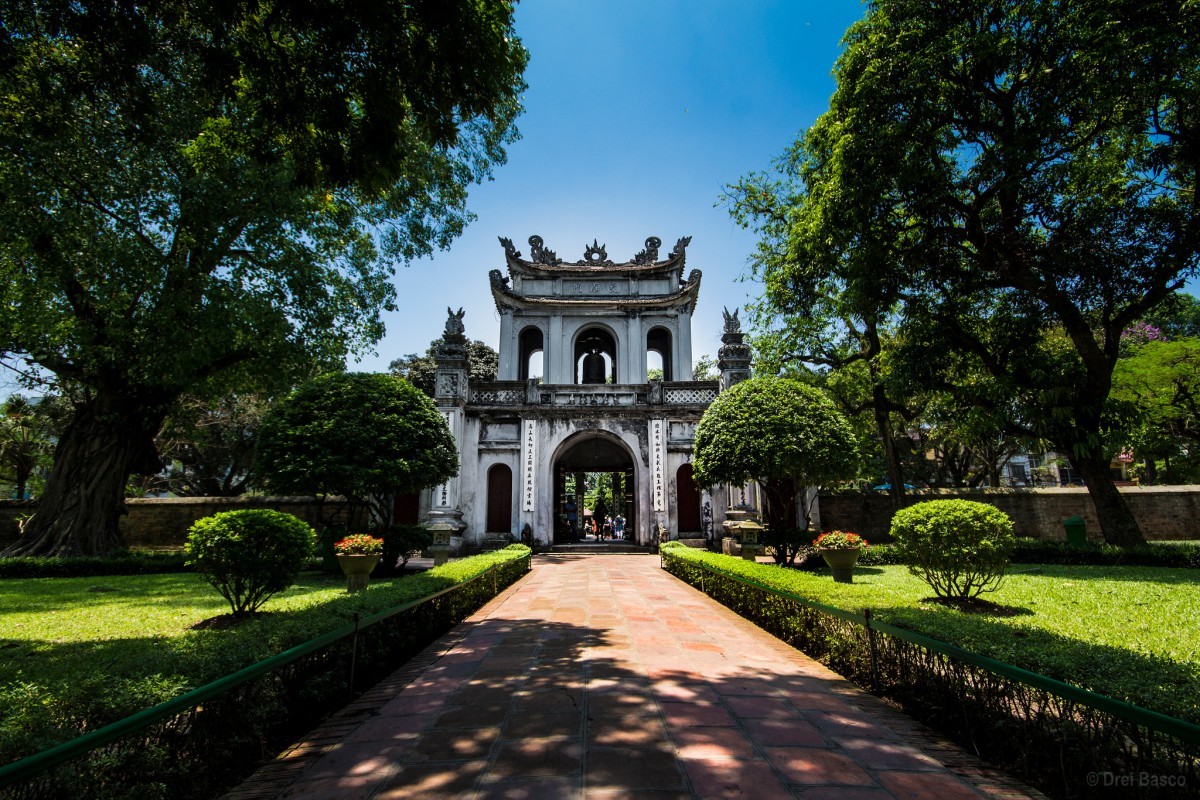
- First zone
Starting with the main gate of the Temple of Literature Gate, go to the Great Middle gate, two small doors are Accomplished Virtue gate and Attained Talent gate.
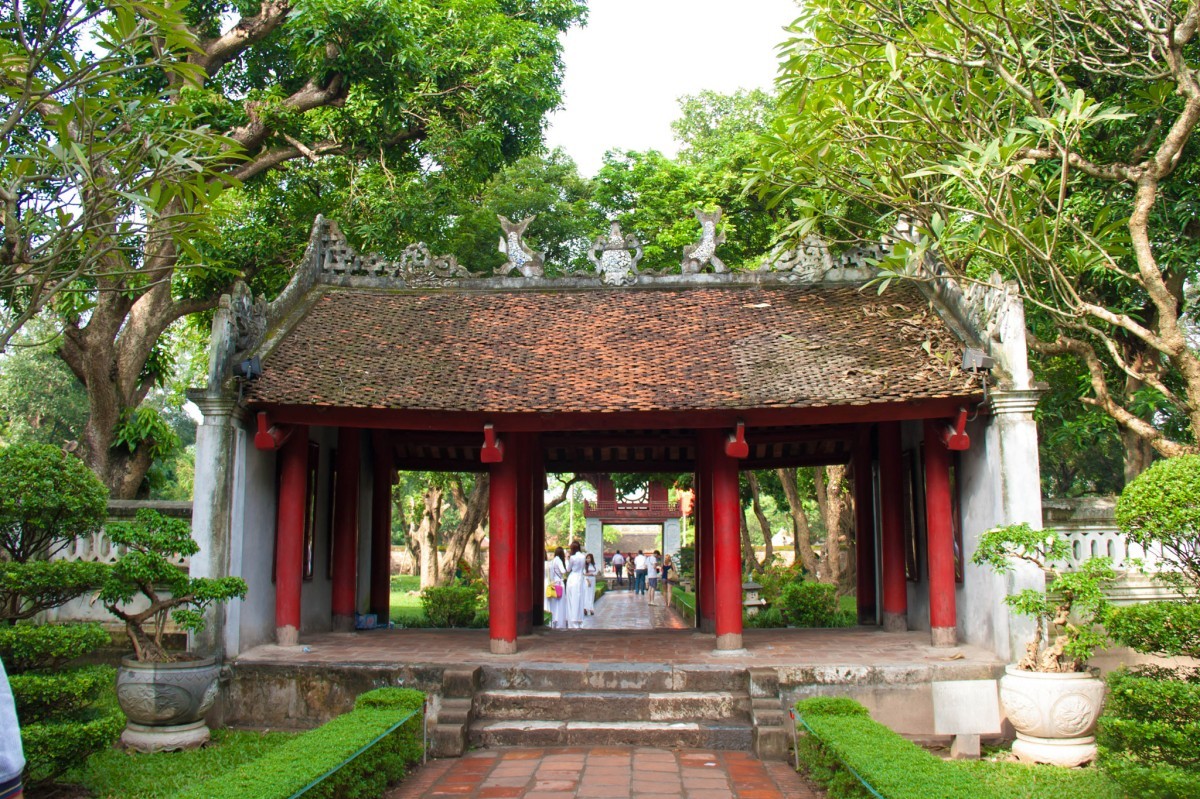
- Second zone:
From the Great Middle gate to the Constellation of Literature pavilion. The Constellation of Literature pavilion is an architectural work that, although not massive, has harmonious and beautiful proportions. The architecture consists of 4 square brick pillars (85cm x 85cm) below supporting the upper floor, with beautiful wooden structures. The upper floor has 4 round doors, a row of handrails and a simple, rustic wooden roof support. The roof tile overlaps two layers to form a construction of 8 roofs, roof ledge and flat roof surface. The attic is a square floor with eight roofs, four sides of the attic wall are round windows in the shape of the sun radiating rays. To the right and left of the Constellation of Literature pavilion are Magnificence of Letter and Crystallization of Letters gate leading to two areas of Doctor’s stele house.
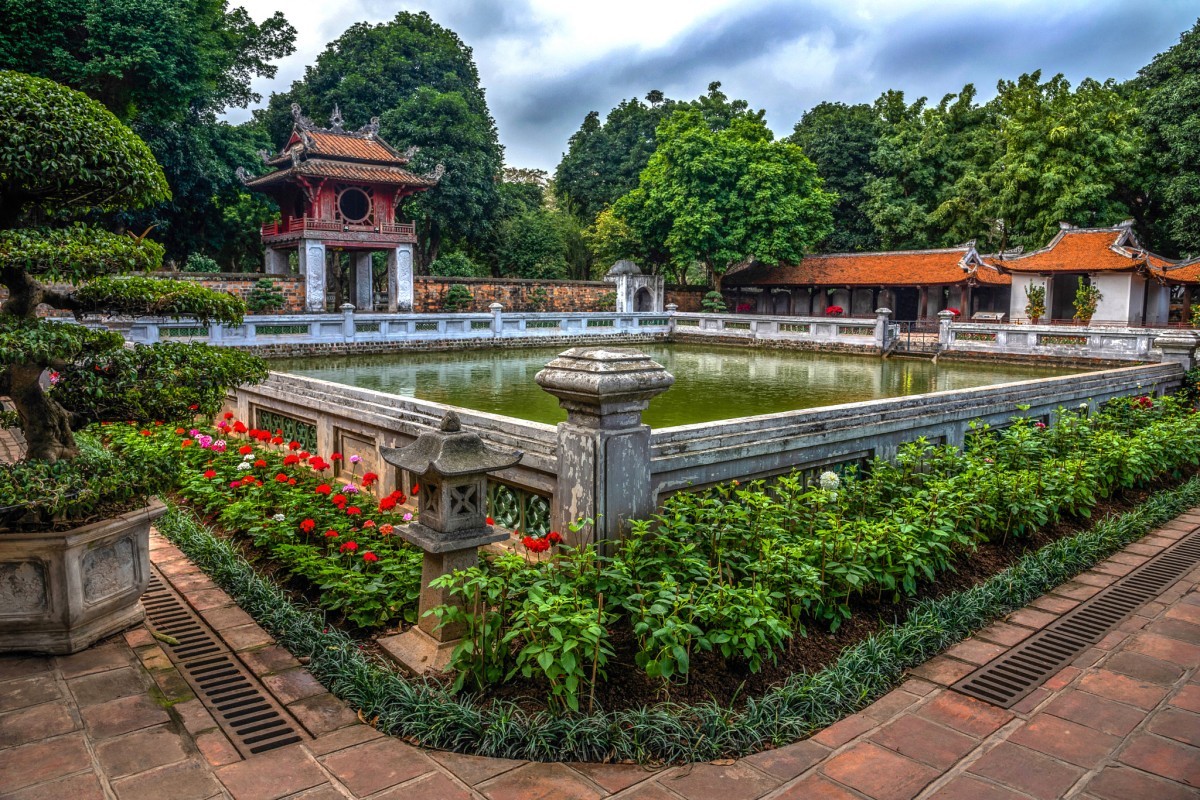
*The Constellation of Literature pavilion in the Temple of Literature – Quoc Tu Giam has been recognized as a symbol of Hanoi city.
- Third zone
Including Well of Heavenly Clarity, with the square shape. The two sides of the lake are the Stelae of Doctors. Each stele is made of stone, placed on the back of a stone turtle, engraved with the name and position of the candidates who passed the great exam. The beer is placed on the back of a stone turtle. There are still 82 steles of the examinations from 1442 to 1779. These are the most precious relics of the Temple.
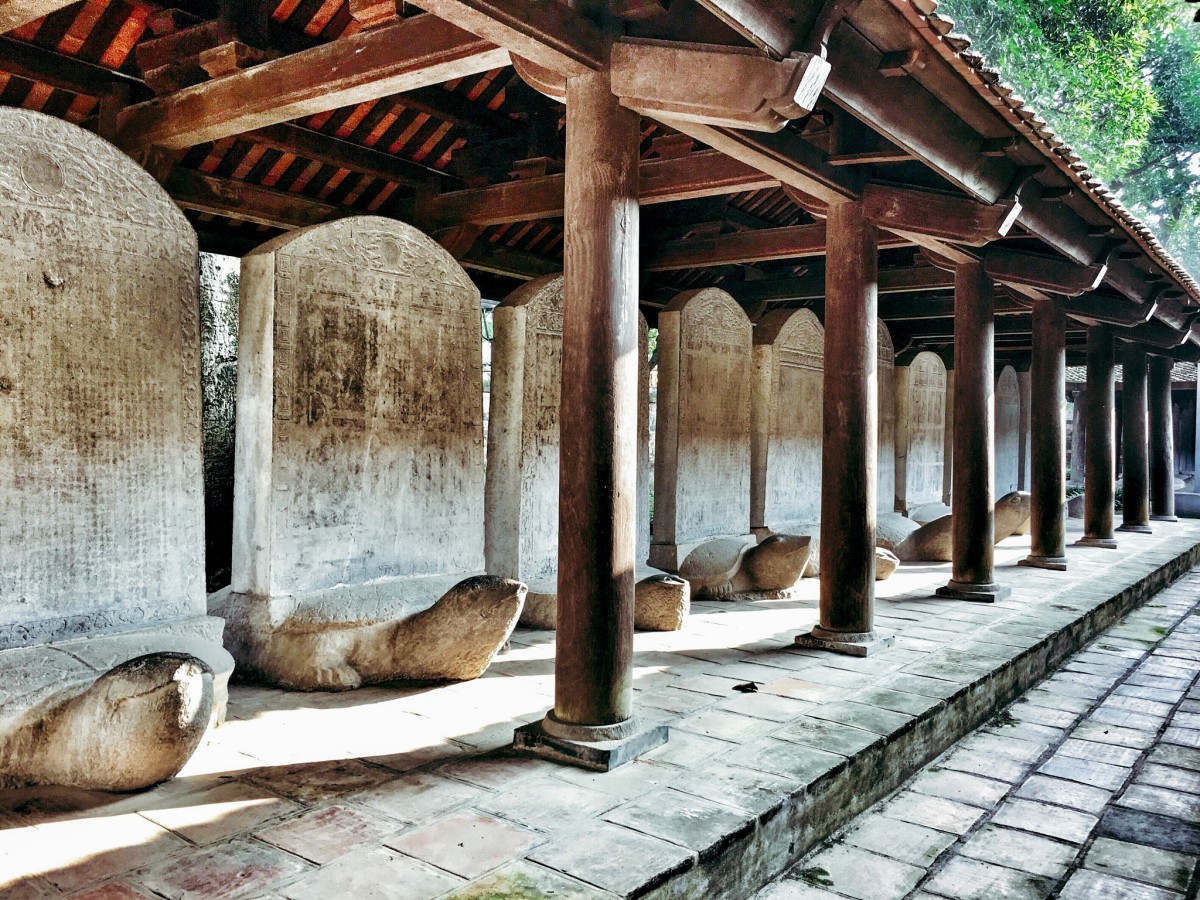
- Fourth zone
It is the central area and the main architecture of the Temple of Literature, consisting of two large works arranged in parallel and in succession. The outer building is the House of ceremony, the inner building is the Upper Palace. This is the area to worship Confucius and Tu Phat (Nhan Tu, Tang Tu, Tu Tu, Manh Tu).
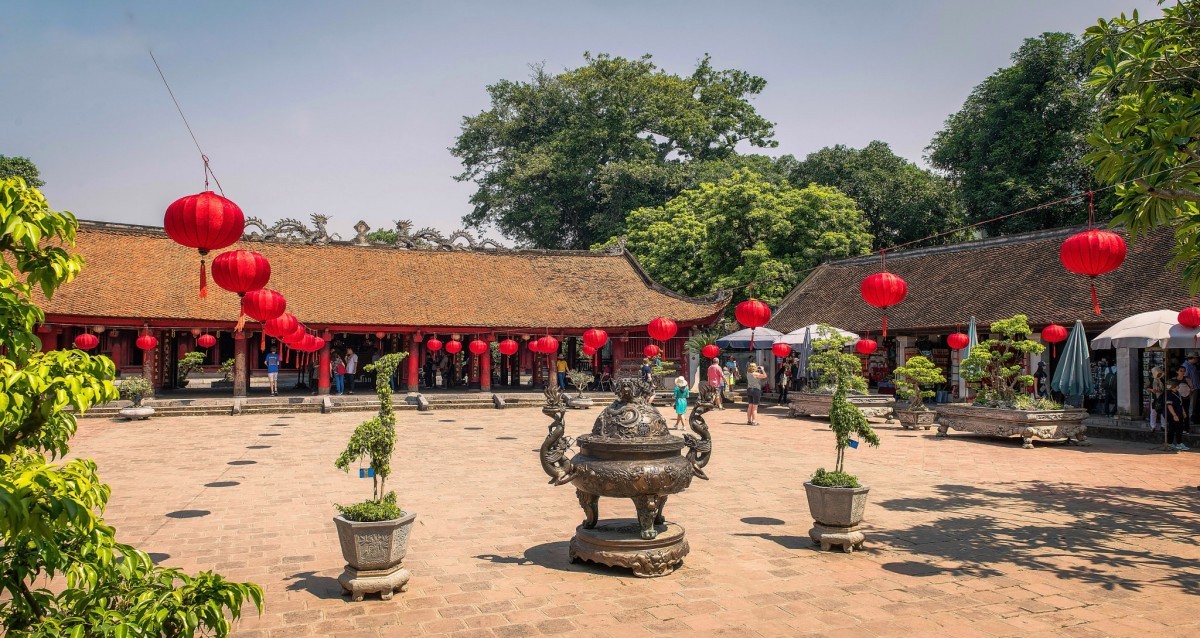
- Fifth zone
Under the Nguyen Dynasty, the Quoc Tu Giam school in Hanoi was abolished, the ethnographer was changed to the Khai Thanh house, worshiping the father and mother of Confucius. However, this building was destroyed during the resistance war against the French. The new Thai Hoc Courtyard was rebuilt by Hanoi city in 1999. In this fifth area, there is also the Tien Duong – Hau Duong house, which is the place to worship the kings Ly Thanh Tong, Ly Nhan Tong, Le Thanh Tong and the private sector worship Chu Van An.
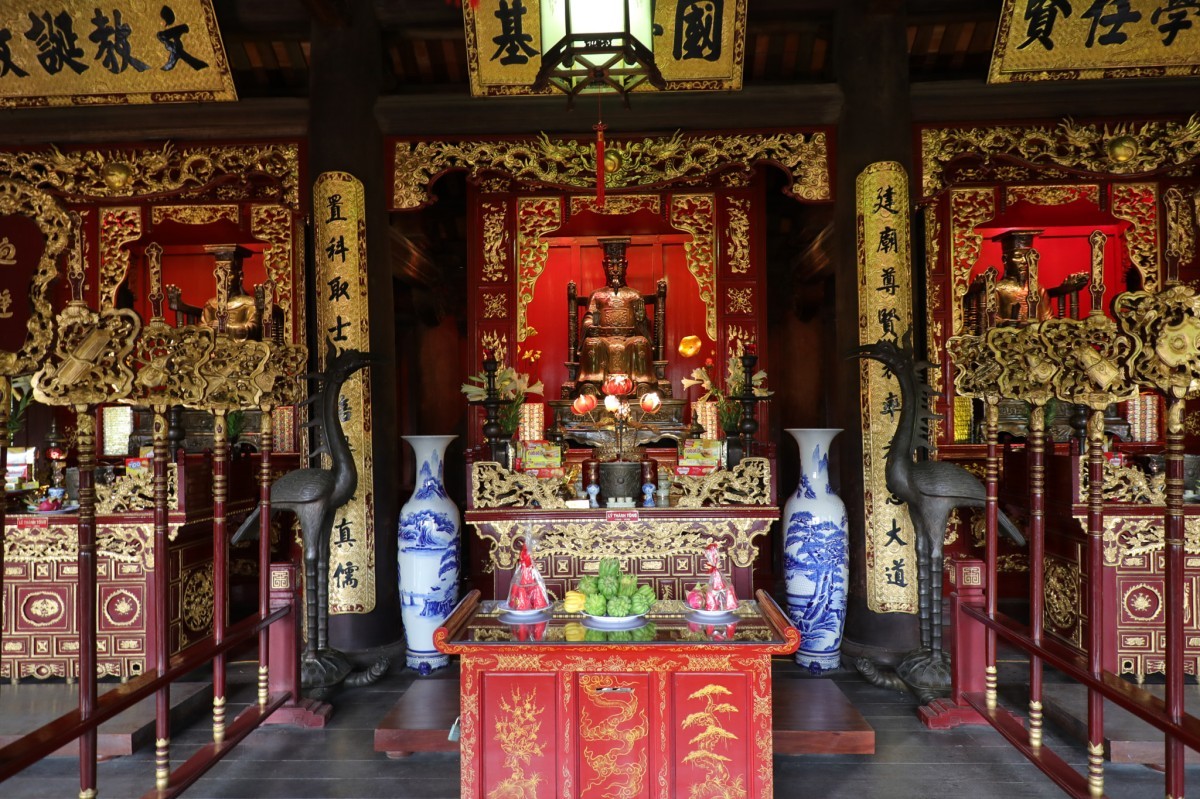
Meaning of Temple of Literature
Temple of Literature is not only the first university of our country but also like a burning candle, lighting up the studious tradition of the Vietnamese people. Coming here, you seem to be motivated by the brilliant gold panels of our forefathers, loaded with full energy to be confident in the journey of learning and discovering human knowledge.
Besides, today the Temple of Literature is also a place to organize poetry festivals, a place to commend outstanding and excellent students and a famous sightseeing place attracting a large number of domestic and international tourists. economy when coming to Hanoi. At the same time, this is also a meeting place to “ask for words” of the people of the capital during the traditional New Year holidays with the hope of a peaceful new year; or in the important exam seasons of the country with the belief of success of the “soldiers”.
Opening hours:
- Open daily, including weekends or special holidays
- 8:00 to 18.00 (7:30 in winter)
Ticket price:
- 30,000 VND / person / visit.
- Free tickets for children under 15 years old
Note:
- Wear polite, neat, clean, dignified clothing
- Do not wear hats or smoke or carry flammable and explosive materials inside the Temple of Literature
- Only offer incense burning ceremony, only light 1 incense stick at the specified place
- Walk softly and speak softly to keep the environment clean
- Do not infringe on artifacts, do not write or draw, stand up, do not rub turtle’s head, Doctor’s stele and other exhibits

